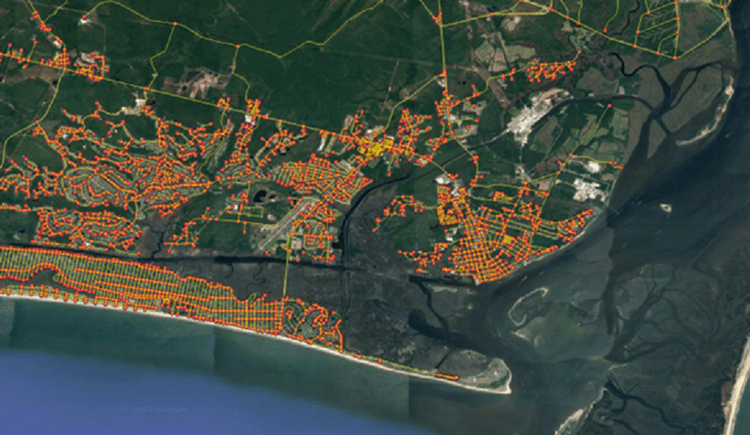Why is this important for your organization?
Many municipalities, in particular those along the coast, are often faced with the need to evacuate their citizens. Other cities have issues with famine, homelessness, structural damage, infrastructural issues, utility issues, cleanup, and more. The ability to incorporate explanatory and predictive data analytics within these issues provides these municipalities with the ability to solve current issues more quickly and efficiently while also planning for those in the future. The RAIL’s expertise within systems engineering and data analytics, along with its strong network of subject matter experts across various related fields can provide your city with the expertise it needs to improve its HADR efforts.
What the RAIL Offers
The RAIL has recently prototyped a novel decision-support application for evacuation assistance. This tool could potentially assist those cities often wrought with natural disasters requiring evacuation with a method for streamlining these efforts and reducing not only the number of casualties associated with these disasters and evacuations, but also reduce the municipal downtime. In addition, the RAIL has experience in various other areas of HADR such as forest fire perimeter prediction, relief planning, and more. This experience includes efforts developed in house as well as those for organizations such as the Department of Defense.
Current RAIL Effort – Application for Individualized Mass Evacuation Routing
Mass evacuations in response to national emergencies are complex undertakings in which a patchwork of local, state, and federal agencies cooperate to move whole communities out of evacuation zones to safety. Significant effort has been spent studying how to motivate the community to evacuate and executing traffic management (pointing people to major roads, using contraflow, etc..), but few resources exist for individually tailored destination selection and route planning.
Our approach uses historical, real-time, and forecast data to inform a simulated environment which is used to train a reinforcement learning algorithm. During an emergency, the algorithm is provided with up-to-date forecasts (e.g. waterway flooding probabilities) and real-time updates (e.g. road closures or gas station outages) and then provides adaptive guidance as the situation on the ground changes. This would address common concerns that research has shown prevents individuals from complying with mandatory evacuation orders and should improve the evacuation process by alleviating burdens on major roads, better utilizing the closest available safe lodging, and distributing refueling needs across a more extensive network of refueling stations.

by the numbers
- 3 lines of effort
- 1 clients served